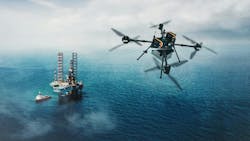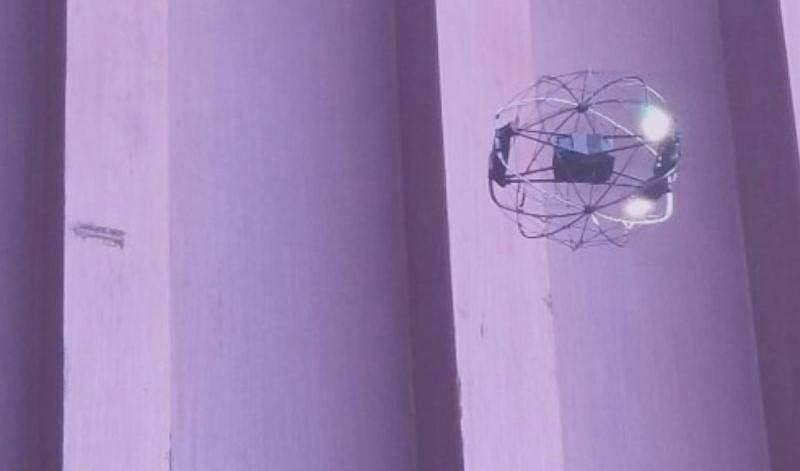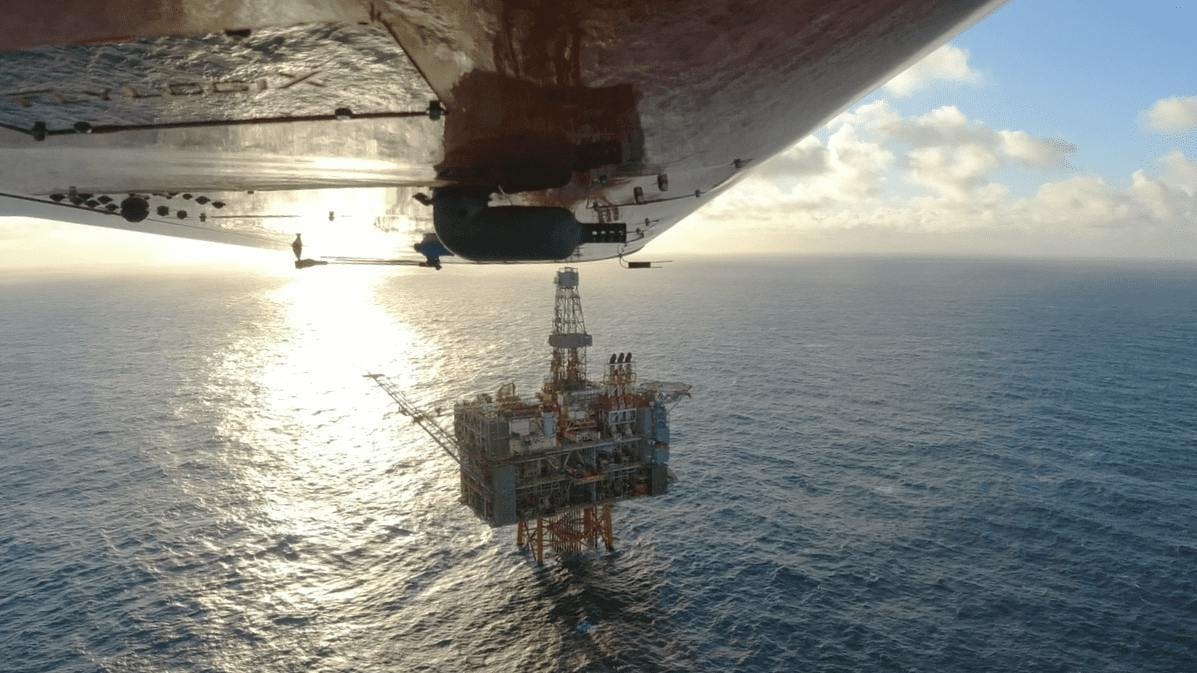Drone advances keeping up with offshore industry needs
Editor's note: A condensed version of this article first appeared in the 2024 Remote Inspections & Operations Special Report, which published within the January/February 2024 issue of Offshore magazine.
By Ariana Hurtado, Editor and Director of Special Reports
Drones developers have released several innovative advancements over the past few years, as challenges and needs evolve to meet inspection, maintenance, repair and operations demands. The solutions that drones can provide for the offshore energy industries range from vessel inspections, logistics services and methane detection to cargo and equipment transfers.
Offshore aerial operations projects over just the last quarter of 2023 included:
- MODEC and Terra Drone performing drone-based hull thickness measurement of a crude oil storage tank in two FPSOs offshore Brazil;
- TotalEnergies signing agreements with Petrobras, SOCAR and Sonangol to jointly conduct methane detection and measurement campaigns on oil and gas facilities, which involves deployment on drones of the AUSEA gas analyzer; and
- Ørsted deploying autonomous drones to transport cargo to offshore wind turbines, starting with the Hornsea 1 wind farm in the North Sea.
Drones must be able to exhibit agility, acceleration and maneuverability in high winds and harsh offshore conditions. They must also be able to resist the effects of salt buildup and corrosion for continuous operations in challenging ocean environments. In addition, for inspection purposes, drones need to be equipped with imaging systems and sensors to capture high-resolution images and gather data to assess the structural integrity of offshore assets.
Ship tank inspections
Another drones project that occured late last year was for G.S Marine Services, a company that needed a comprehensive visual inspection of the entire inner surface of a tank exceeding 10 m and faced time consumption and costs challenges as well as safety concerns. A Flybotix drone, equipped with a 4K camera and LED lighting, conducted thorough inspections of the cargo tanks (eliminating the need for costly scaffolding). Plus, the immediate streaming of high-quality images to the remote control center allowed real-time collaboration with surveyors.
Using Flybotix's ASIO drone, G.S Marine Services completed a visual inspection of the tank within 24 minutes, achieving a thorough assessment of the tank walls' condition and identifying potential issues. Flybotix said this inspection was significantly faster and cost-effective compared to traditional methods, reducing inspection time from several days. In addition, using the drone for visual inspection resulted in potential savings ranging from several thousand to more than $100,000, according to Flybotix. Staging costs, which could reach up to $195,000 for large ships, were reduced to $10,000 to $30,000 with the drone. Additionally, the company said elimination of drydock time and the ability to maintain the ship’s productivity during inspections added further value.
Flybotix drones also can be used to avoid risks for personnel during the inspection of offshore rigs. They also can be utilized to ensure a ship's integrity by inspecting ballast tanks while keeping track of any corrosion spots as well as to inspect storage and fuel tanks of ships to ensure their integrity and the safety of merchandise and crew.
Offshore logistics testing
Last year Equinor and drone operator Nordic Unmanned tested the incorporation of logistics drones into offshore operations, and the partners say they successfully completed the world’s first in-field drone logistics operation test at an offshore field. The drone operations took place at Equinor's Gullfaks C offshore installation in the North Sea from Aug. 15-29, 2023. The companies said they have proven the maturity of the technology and the readiness to include fully automatic drones in offshore logistics operations.
The offshore crew performed 51 fully automated beyond visual line of sight (BVLOS) flights at the Gullfaks Field, consisting of flights delivering cargo between the three installations and an emergency response vessel. The team also developed the procedural framework allowing for quick implementation of offshore drone operations for Equinor and other offshore operators. Nordic Unmanned aims to obtain full autonomy for its system, allowing operations to be performed from an onshore operational center without crew present offshore.
Offshore cargo drone deliveries
UAVs operating BVLOS
About the Author
Ariana Hurtado
Editor-in-Chief
With more than a decade of copy editing, project management and journalism experience, Ariana Hurtado is a seasoned managing editor born and raised in the energy capital of the world—Houston, Texas. She currently serves as editor-in-chief of Offshore, overseeing the editorial team, its content and the brand's growth from a digital perspective.
Utilizing her editorial expertise, she manages digital media for the Offshore team. She also helps create and oversee new special industry reports and revolutionizes existing supplements, while also contributing content to Offshore's magazine, newsletters and website as a copy editor and writer.
Prior to her current role, she served as Offshore's editor and director of special reports from April 2022 to December 2024. Before joining Offshore, she served as senior managing editor of publications with Hart Energy. Prior to her nearly nine years with Hart, she worked on the copy desk as a news editor at the Houston Chronicle.
She graduated magna cum laude with a bachelor's degree in journalism from the University of Houston.




